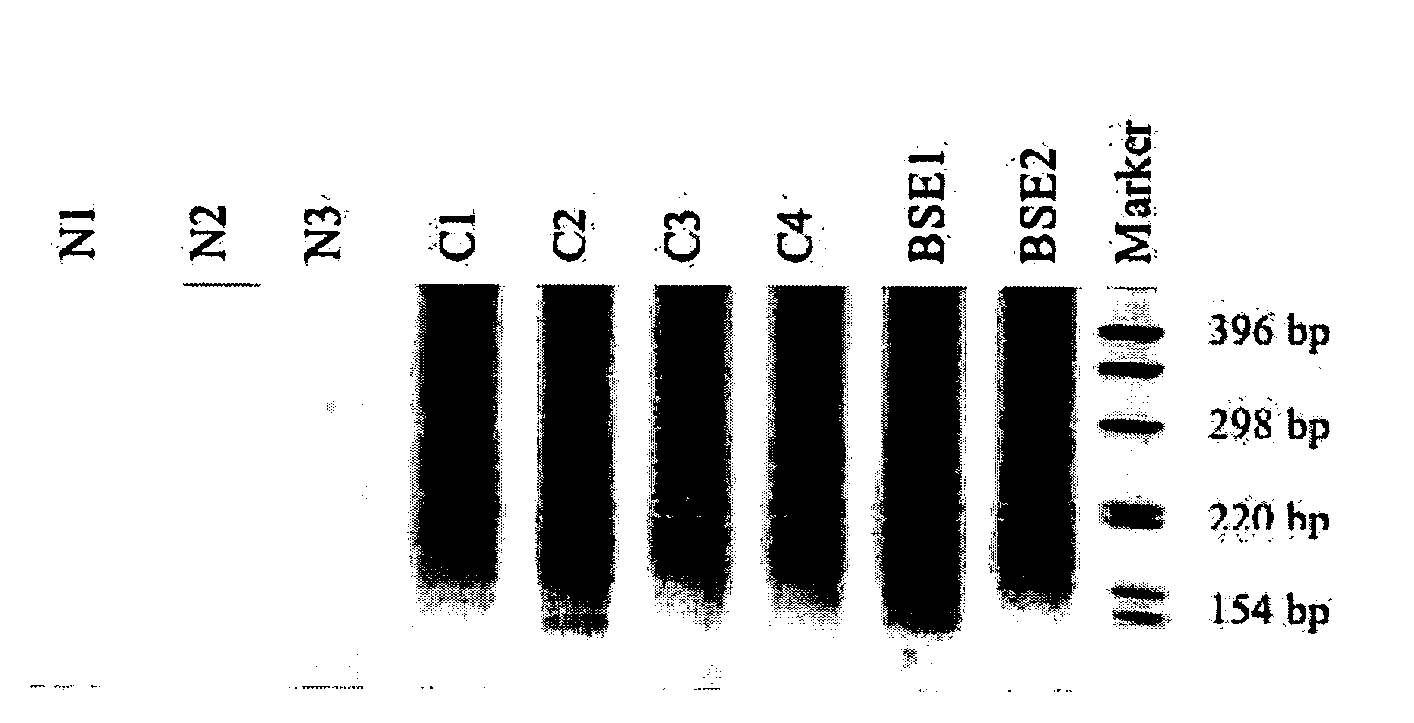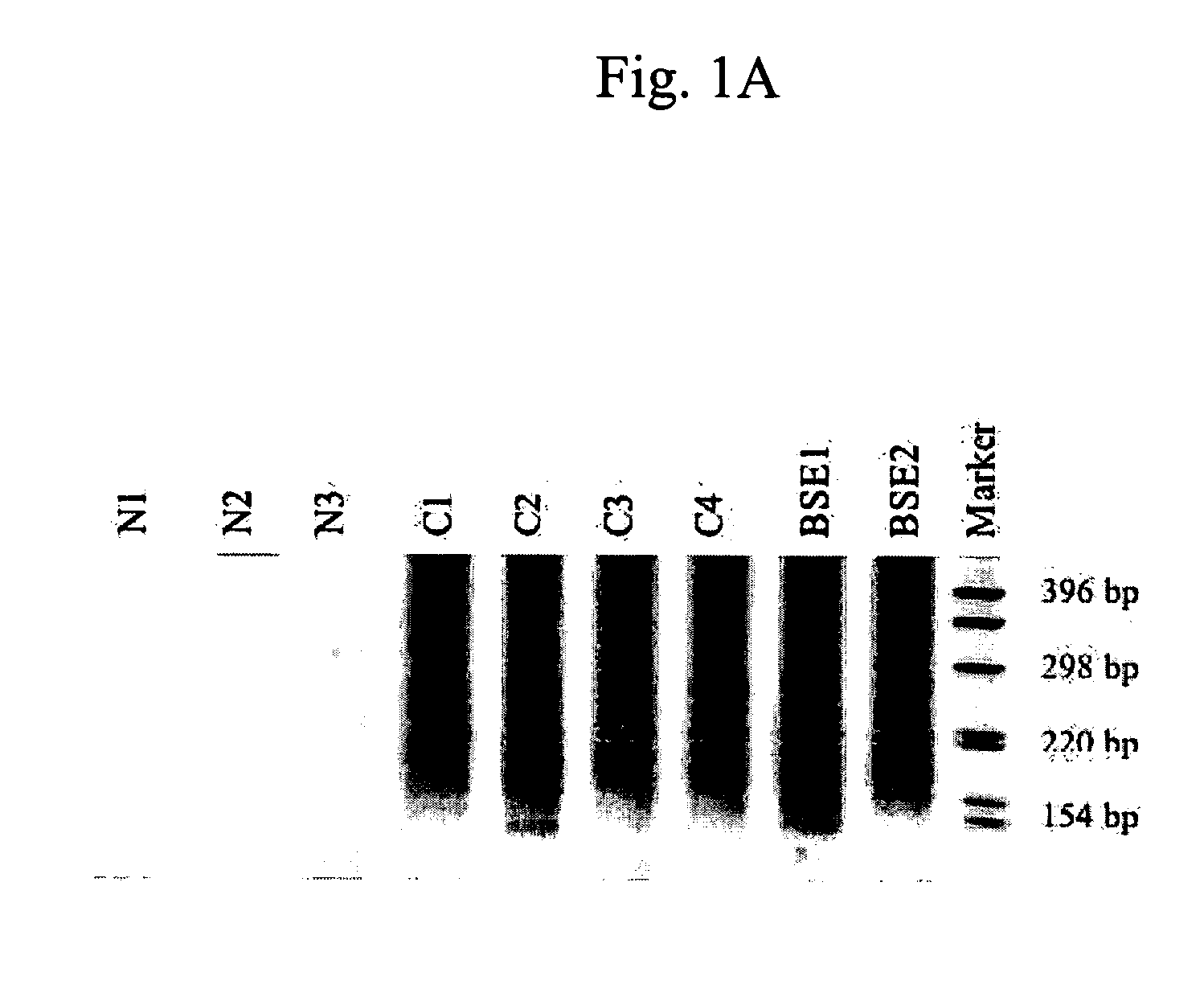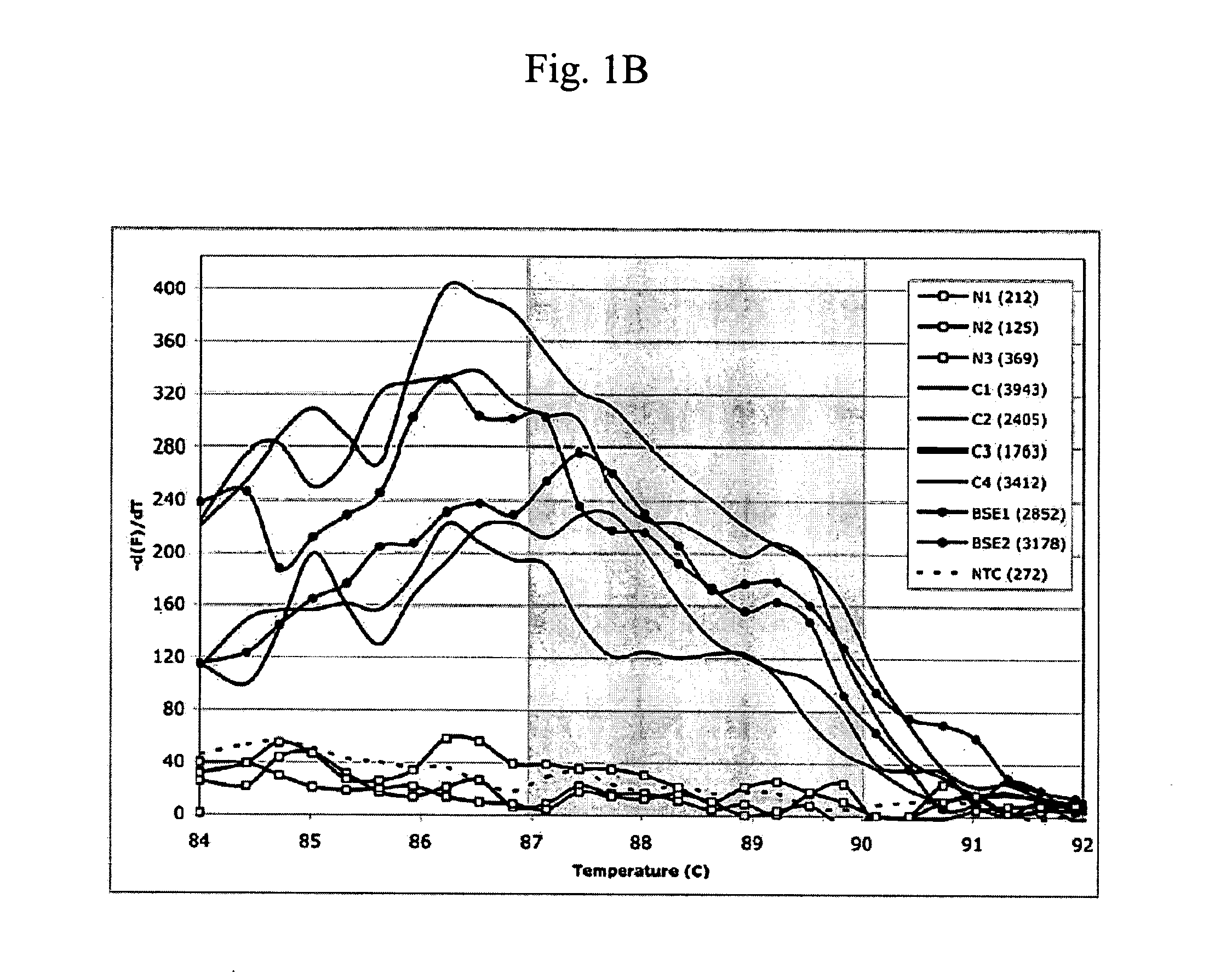Detection of nucleic acids to assess risk for bovine spongiform encephalopathy
a technology of spongiform encephalopathy and nucleic acid, which is applied in the direction of biochemistry apparatus and processes, fermentation, organic chemistry, etc., can solve the problems of severe symptoms and inability to stand, and achieve the effect of increasing the risk of bs
- Summary
- Abstract
- Description
- Claims
- Application Information
AI Technical Summary
Problems solved by technology
Method used
Image
Examples
example 2
Use of Alternative Primer Sets to Identify Animals at Risk
[0096] Any number of primer pairs can be used in the detection methods of the invention. This example provides alternative exemplary primer pairs.
[0097] Primer #55 corresponds to 18 nucleotides within a consensus SINE sequence (M26330 Bovine short interspersed repetitive sequences found in genomic DNA) that repeats itself multiple times in bovine genome in direct and reverse orientation, including twelve repeats within PrP gene (AJ298878 Bos taurus PrP gene for prion protein). Primers #60-63 correspond to PrP sequences located 150-1000 bp upstream (60F, 61F, 62F, and 63F) or downstream (60R, 61R, 62R, or 63R) from the consensus primer sequence #55.
[0098] In addition to these primers, a control set of primers (PG01, PG02) directed against the non-translated region of enteroviruses was used.
Primer5′-cttgcctggagaatccca-3′(SEQ ID NO: 3)55FPrimer5′-gggattctccaggcaaga-3′(SEQ ID NO: 4)55RPrimer5′-gcatgttcctttcagaa-3′(SEQ ID NO:...
example 3
Use of Serum or Plasma as Acellular Sample
[0100] This example shows that plasma samples can also be used. The analysis was performed using the primers CHX-1F and CHX-1R and PCR conditions shown in Example 1. The results using plasma samples were correlated to results obtained analyzing serum samples from the same animals. The results are shown in FIG. 7.
PUM
| Property | Measurement | Unit |
|---|---|---|
| temperature | aaaaa | aaaaa |
| temperature | aaaaa | aaaaa |
| temperature | aaaaa | aaaaa |
Abstract
Description
Claims
Application Information
 Login to View More
Login to View More - R&D
- Intellectual Property
- Life Sciences
- Materials
- Tech Scout
- Unparalleled Data Quality
- Higher Quality Content
- 60% Fewer Hallucinations
Browse by: Latest US Patents, China's latest patents, Technical Efficacy Thesaurus, Application Domain, Technology Topic, Popular Technical Reports.
© 2025 PatSnap. All rights reserved.Legal|Privacy policy|Modern Slavery Act Transparency Statement|Sitemap|About US| Contact US: help@patsnap.com



